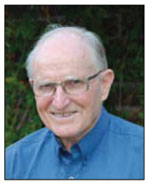Servicios Personalizados
Articulo
Indicadores
Links relacionados
-
 Citado por Google
Citado por Google -
 Similares en Google
Similares en Google
Compartir
SAMJ: South African Medical Journal
versión On-line ISSN 2078-5135
versión impresa ISSN 0256-9574
SAMJ, S. Afr. med. j. vol.99 no.12 Pretoria dic. 2009
FROM THE EDITOR
SAMA: from crises to cleansing (to crescendo?)
Recent crises have thrown the South African Medical Association (SAMA) into turmoil. What have these been, and what are the solutions?
But first a glace at what history tells us. Historically the Medical Association is well acquainted with schisms. Hardly had the South African Medical Association been established in 1883 when certain geographical groups, Grahamstown, Frontier and Kimberley, decided to secede on the grounds that they received insufficient benefit from the connection to warrant their subscription fees.1 Repeated attempts to unify the splinter groups were complicated by many becoming branches of the British Medical Association. Language differences have also played their part, this factor proving to be both unifying and at times divisive. Commencing with Louis Leipoldt's editorship of the South African Medical Journal, Afrikaans enjoyed equal status with English in the journal. The first translation of the journal title was Die Suid Afrikaanse Tydskrif vir Geneeskunde, becoming the SA Mediese Tydskrif in 1970. I well remember the orchestrated opposition to the next change to SA Mediese Joernaal (sharing the acronym SAMJ), despite the support of deans of the Afrikaans medical schools.
Deep political divisions followed Biko's death in detention, leading to the formation of an opposition group, the National Medical and Dental Association (NAMDA) and the formation of further groups with differing interests. These came together as 'partners' in a 50:50 union with the Medical Association of South Africa (MASA) in 1998 to form the new South African Medical Association (SAMA). Acrimony over how these more recent historical groupings should be represented at the National Council and its standing committees continued despite increasing numbers of new graduates whose only experience and allegiance was to SAMA.
Some years ago when repeated personal misfortunes were my lot I had an expression that I repeated to friends that was intended to bring humour and perspective: 'Cheer up, things could be worse – and sure enough things got worse!' The same could be said of SAMA's recent travails.
The most critical problem was a crisis of leadership that resulted in SAMA taking its eye off the main issues. The former chairman, Kgosi Letlapi, and the former Secretary-General, Aquina Thulare, are outstanding people, and the good things that they have done for the Association and elsewhere have been documented. However, personal and/or ideological agendas that were at odds with the requirements of the Association resulted in increasing divisions to the detriment of much-needed teamwork by the organisation. Kgosi resigned when it became apparent that he no longer had the support of the Board, and Aquina's contract was not renewed. Denise White, who had been vice-chair, stepped in as chairperson and in due course Trevor Terblanche, who had been active, experienced and respected in SAMA affairs, was appointed as the new Secretary-General. The leadership (SAMA owes them all a great deal!) was catapulted into major crises affecting the public and private sectors of the Association, which was organisationally split and in disrepair.
The OSD (Occupational-Specific Dispensation), i.e. salaries for doctors in the public sector, had been grossly mishandled by a National Health Department that was in even greater disarray – a legacy of Manto Tshbalala-Msimang's notorious reign. The reactions of doctors were a long time in coming, but their intensity, including strikes and picketing, surprised all. The private specialists also broke away, citing lack of support for their causes. On top of all of this is the looming NHI (National Health Insurance), which has massive implications for health care in South Africa.
Mistrust and threats were much in evidence at the start to SAMA's Annual General Meeting. But once over that hurdle the election of chairpersons and members of SAMA committees saw many new faces, especially of the younger members, and no longer an emphasis on the old 'partner' and 'MASA' groups.
A new sense of direction and commitment is evident. Membership numbers have increased and there is clearly a feeling of common purpose. The public and private sectors are equally important to SAMA, and much thought has already gone into how to define and strengthen union activities of the public sector members, and how the private sector should be provided with appropriate support and assisted in its tasks, such as setting fees again.
The speech of the Minister of Health, Dr Aaron Motsoaledi, at the awards dinner was another major cause for optimism. He acknowledged many lost years in health care in South Africa, and displayed a clear understanding of the problems and a willingness to engage and work with health professionals to jointly address South Africa's immense health problems.
History has shown that crises have resulted in re-appraisal, resulting in a stronger and more representative medical association. From the debates and elections at the recent SAMA AGM, one can reasonably conclude that the association is poised to move from its crises to a new crescendo, with younger members much in evidence.

J P de V van Niekerk
Managing Editor
1. Burrows EH. A History of Medicine in South Africa. Cape Town: AA Balkema, 1958. [ Links ]














